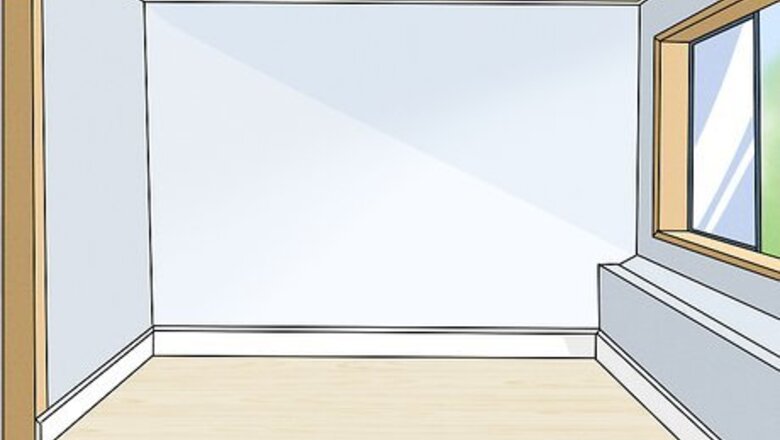
views
X
Trustworthy Source
PubMed Central
Journal archive from the U.S. National Institutes of Health
Go to source
Preparing for the Savasana Pose
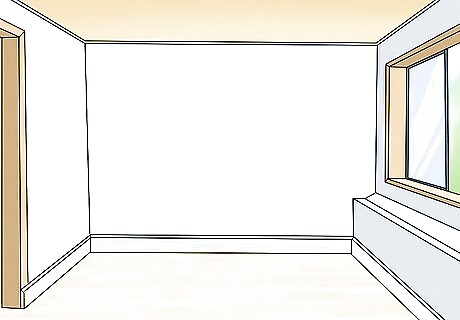
Pick the right location. Keeping a peaceful mind is key to correctly performing Savasana. You should look for a quiet, dark place that will allow you to focus on your breathing and meditation. You might need to move to another room than the one you used to perform your previous poses if you have many distractions or can't relax. If you are in a class, your instructor may darken the lights in the room as you relax. Make sure the room is a comfortable temperature. Extreme temperatures in heat or cold could distract you from the mental benefits of the pose. You must also have a comfortable surface to lie on. Generally, you will need a yoga mat or towels to give you a buffer on hardwood floors. You might want to avoid practicing this pose on concrete or tile floors without a mat.

Maintain your space. You will have to lie down fully in the Savasana pose. This might mean your legs will extend past your mat. Make sure you have enough space to complete the pose. If you are in a crowded yoga class, test lying down on your mat before the beginning of the class so you will know where to position the mat.
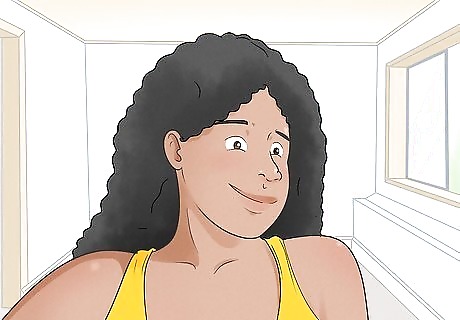
Reflect on the value of yoga. While the Savasana pose has been shown to have wonderful benefits for the back and abdominal muscles, you shouldn't just complete this pose for the physical benefits. Remember the mental benefits of Savasana as you perform this pose. Yoga gives you the power to control and minimize negative thoughts that can lead to stress, anxiety or depression.
Performing the Savasana Pose
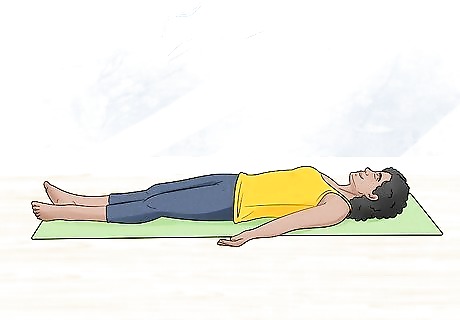
Lie down on your back. As you recline on your yoga mat, place your feet spread slightly apart from each other. Put your arms at your side with your palms facing up. Your fingers should be curled up naturally. Close your eyes and focus on your breathing. Breathe from your diaphragm, which is in your lower belly. Push out the muscles in your diaphragm as you inhale. Inhale for five counts. Then exhale for another five counts. Repeat the breathing sequence until you feel relaxed.
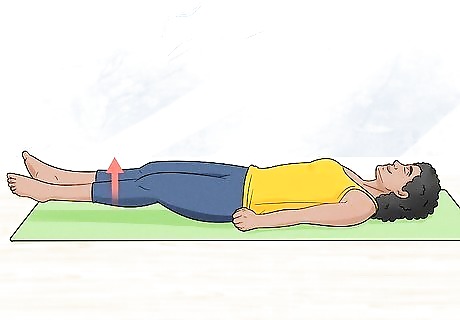
Tighten and lift your legs. Inhale deeply as you tense your body. Tighten your buttocks and raise your legs slightly off the ground. Be sure not to put extra pressure on your lower back; lift from your thighs and calves instead. Clench your fists and raise your arms as well. Tense your forehead and suck in your cheeks. Imagine your are compressing all of the energy in your body into your extremities -- toes, fingers, and your nose.
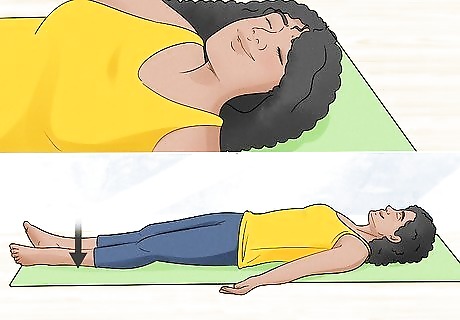
Relax your body. Exhale, breathing inward as you release the pose. Lower your legs and unclench your fist as you relax. Let go of any anxious, stressful or negative thoughts while you are performing this pose. Imagine your mind emptying like you are pouring water from a jug. Although you should try to relax your body all at once, don't feel pressure to rush into relaxation. Gradually breathe out and feel your body relax into the floor. There is no time limit for this pose. If you have completed 45-60 minutes of yoga exercises, try relaxing in the Savasana pose for 10 minutes to fully appreciate your session. It is not unusual to fall asleep in this pose, but make sure that you do not have an important meeting or event afterward. Set a timer on a phone or nearby clock if you have to stop by a certain time.
Recovering from the Pose
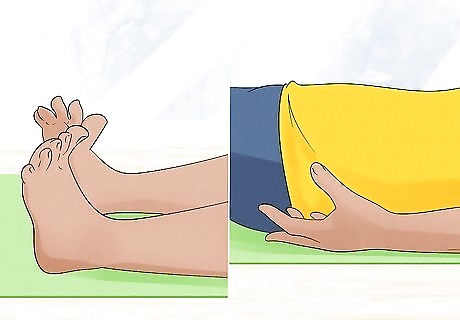
Reawaken your body. Begin by wiggling your toes and fingers. Open your eyes last. Imagine that you are opening up to a new body as you come out of the pose. Savasana should give you a sense of renewal and rebirth.
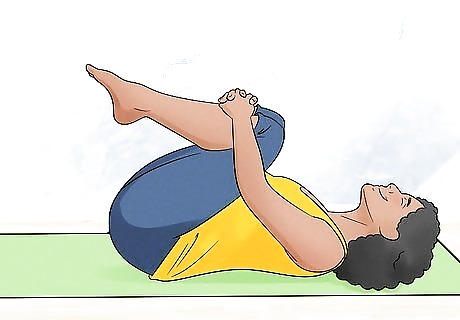
Hug your knees. Pull your knees into your chest, wrap your arms around them, and give them a squeeze. This pose is also meant to stretch out your muscles after your have tested them with a long yoga session. It is especially effective at protecting your knees from injury.
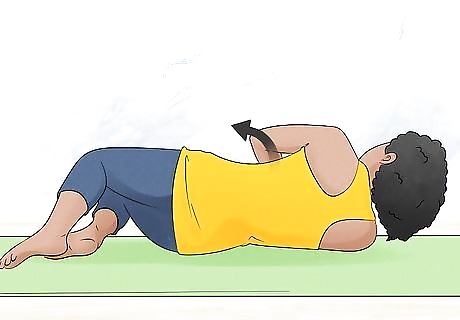
Roll out of the pose. Turn onto your right side. Then, slowly push yourself to an upright position using your right elbow. Maintain your breathing so you exhale as you push up onto your right elbow.
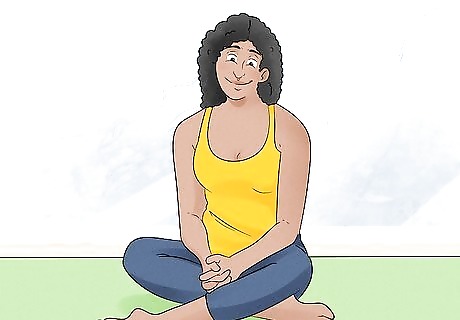
Finished.



















Comments
0 comment